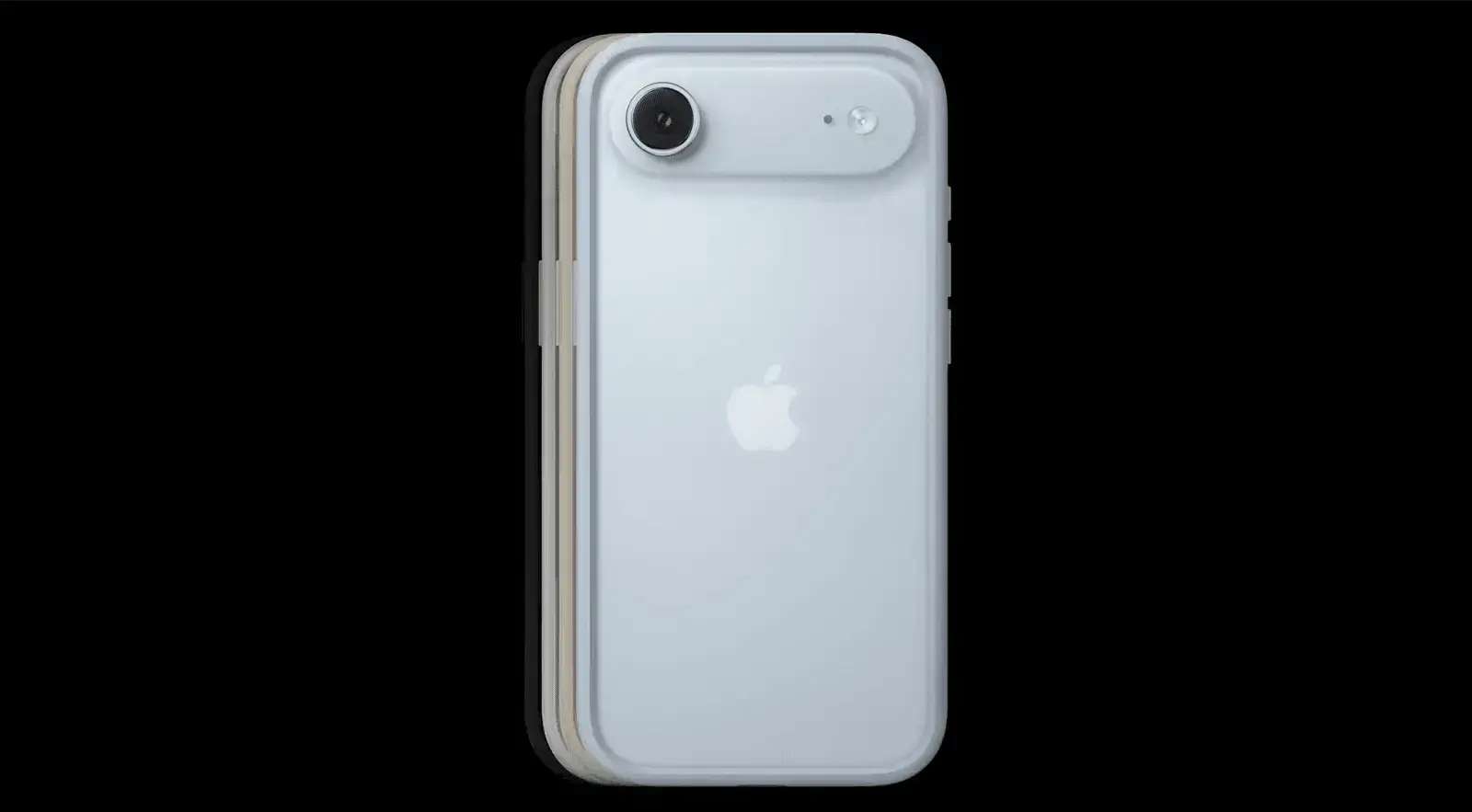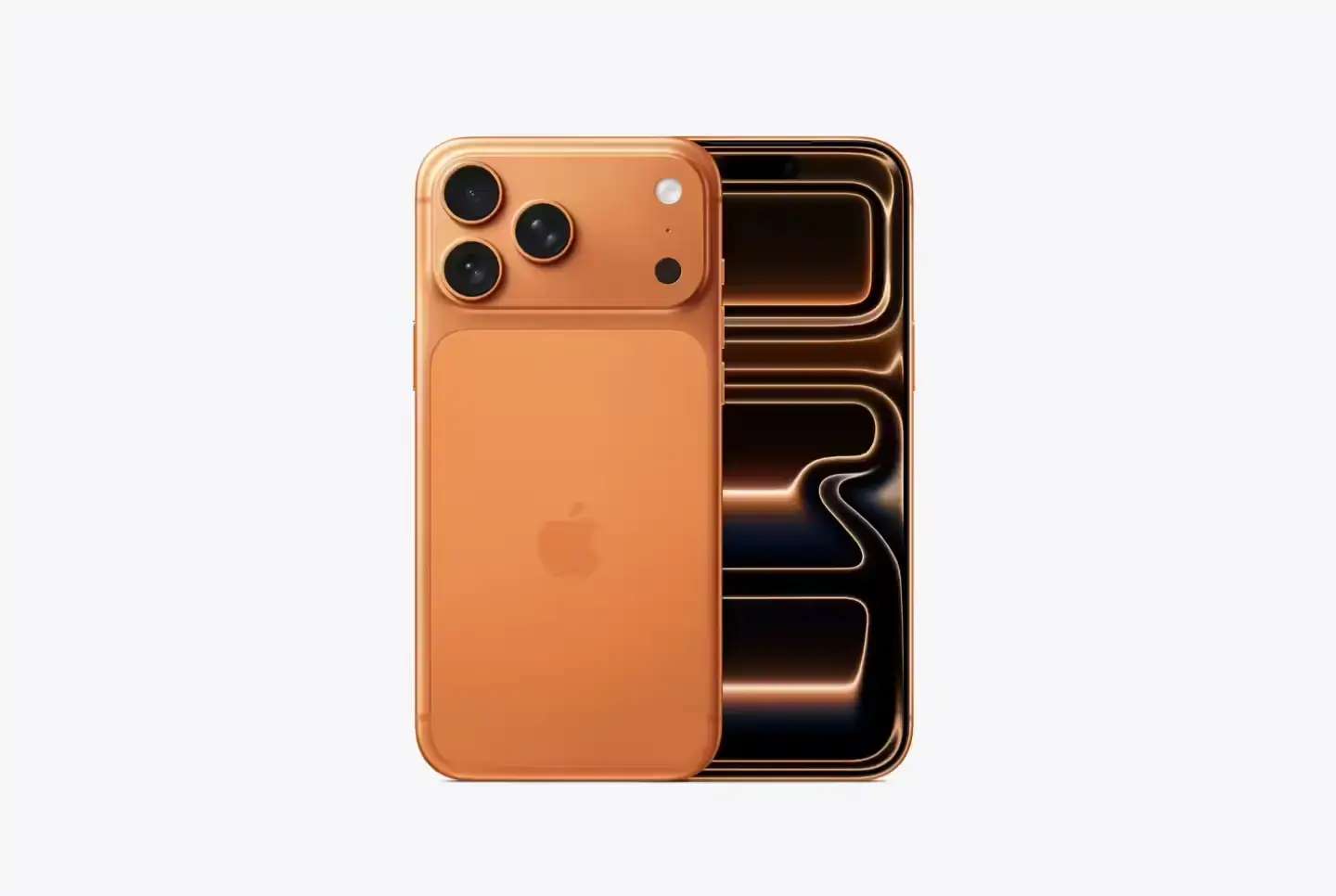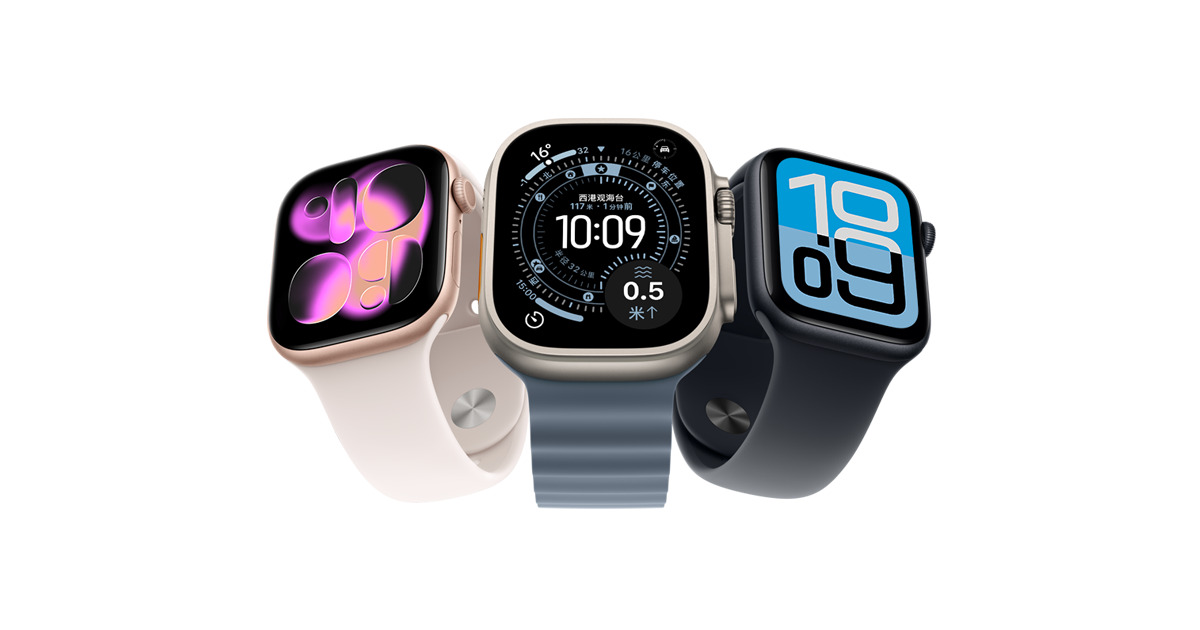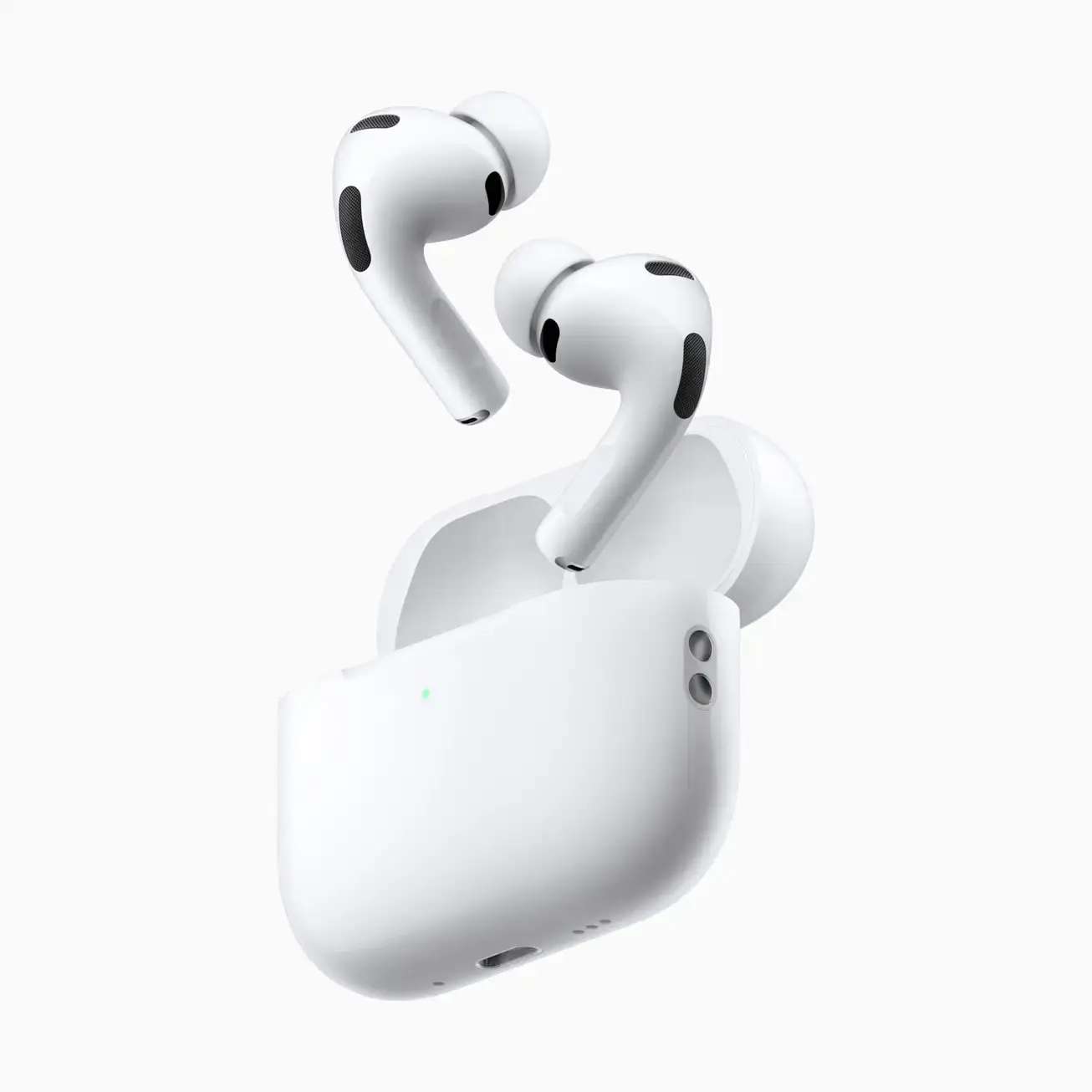An article summarizes Apple's autumn conference: The thinnest iPhone in history debuts, eSIM enters China for the first time
The iPhone Air is only 5.6 mm thick and is the thinnest smartphone in Apple's history.
On September 10, Apple's 2025 autumn conference arrived as scheduled, bringing new upgrades to iPhone, Apple Watch, AirPods and other product lines.However, unlike previous years, this year's press conference, although there were considerable technological breakthroughs and product iterations at the hardware level, was vague in artificial intelligence (AI), the world's most popular cutting-edge field.
iPhone Air
The biggest highlight of this conference is the newly launched "iPhone Air" series.This is the first time that Apple has created a separate product line for thin and light mobile phones, and its design concept is quite similar to that of the MacBook Air.The iPhone Air is only 5.6 mm thick and is the thinnest smartphone in Apple's history. It uses a titanium middle frame and double-sided super-ceramic crystal glass, and its weight is greatly reduced.Behind this extreme thinness is the redistribution of the fuselage structure: the camera and chips are centrally placed on the top, and most of the remaining space is reserved for batteries.However, the battery capacity is still only 3149mAh, which is lower than the 5000mAh of the mainstream flagship of the Android camp. The battery life performance is worrying.Apple seemed to be prepared for this. At the press conference, it simultaneously launched a dedicated MagSafe external battery to provide up to 65% additional power support for the iPhone Air. It seemed to imply that its "thinness" was a design compromise at the expense of power.
What is more iconic in the market is that the iPhone Air became the first eSIM phone launched in the China market.Previously, eSIM technology was limited to smart watches and some iPad devices in China. The widespread implementation of mobile phones has not been advanced due to policy and operator coordination issues.This time, the iPhone Air clearly no longer supports physical SIM cards and only relies on eSIM, realizing Apple's first launch in the eSIM field in China.China Unicom has become the only cooperative operator, and users need to go to its stores to complete identity authentication and open services.This change may become a turning point for China operators to fully popularize eSIM services.
In terms of price, the starting price of the iPhone Air is 7999 yuan, which is close to the high-end flagship pricing.In addition to its thin and light design, its A19 Pro chip is also a highlight.The chip's GPU computing power is up to three times higher than that of its previous generation. Apple calls it a processor more suitable for local AI computing, and for the first time introduced its self-developed cellular modem C1X, which has twice the data transmission speed of the previous generation.These technological advances have undoubtedly enhanced Apple's basic support for the AI capabilities of terminal devices, but the press conference still showed relatively restraint in displaying relevant AI functions, only mentioning that Apple Intelligence can achieve basic functions such as real-time translation.

iPhone 17
Another big focus is the official release of the iPhone 17 Pro series.In terms of design language, the new generation of iPhone Pro has returned to an integrated metal style, using a brushed aluminum middle frame to enhance heat dissipation performance.The new machine has two screen size of 6.3-inch and 6.9-inch. It supports a refresh rate of 120Hz and a peak brightness of up to 3000 nits. It is currently the iPhone with the strongest display capabilities.It is worth noting that compared with the previous generation, the iPhone 17 Pro series camera system has once again undergone a major upgrade: the three rear cameras are all 48 million pixels, the sensor area has been increased by 56%, supplemented by the front-facing 18 million pixel Center Stage camera, bringing more powerful expression to mobile photography.
The new Pro series is equipped with a new generation wireless chip N1 that supports Wi-Fi 7, Bluetooth 6 and Thread technologies to achieve faster data transfer rates and lower power consumption.The A19 Pro chip has also made a significant leap in overall computing power, with CPU and GPU performance improving by about 40% compared with the previous generation.The starting price is 8999 yuan, and the top iPhone 17 Pro Max is as high as 17999 yuan, setting the highest price in Apple's history.Analysts believe that its high selling price not only reflects factors such as rising component costs and expansion of storage space, but is also affected by uncertainties in geopolitics and trade policies, especially during the critical period when the global electronics supply chain is facing restructuring.
The upgrade of the standard iPhone 17 was relatively restrained, but it also completed several regrets that had not been solved for many years.The most critical thing is that Apple has finally equipped the standard iPhone with a 120Hz high-brush screen, completely ending the era of 60Hz screens.Its screen uses a 6.3-inch second-generation super-ceramic crystal panel, which has better scratch resistance.The rear camera combination is a 48-megapixel main camera + a 12-megapixel auxiliary camera, and the front is a new camera designed with a square sensor.In terms of chips, the basic version of A19 is still significantly improved compared with previous generations.The starting price is 5999 yuan, and the storage space starts from 256GB. Compared with the previous generation, Apple has finally humanized it once.

Apple Watch
This conference released three new watches in one go: Apple Watch Ultra 3, Apple Watch Series 11 and Apple Watch SE 3, which are aimed at professional sports users, high-frequency daily users and entry-level users respectively.
The Apple Watch Ultra 3 still focuses on "extreme sports scenes" and is designed for high-intensity outdoor activities.Compared with the previous generation, it has significant improvements in hardware reliability, sensor sensitivity and battery life performance.The Ultra 3 is equipped with Apple's latest S10 chip, which not only improves performance by more than 25%, but also more efficiently supports localized AI computing tasks and improves voice interaction, health data analysis and environment awareness capabilities.It is particularly worth mentioning that the new generation of dual-frequency GPS system equipped with it can be improved to sub-meter level, which is particularly important for users who need high-precision positioning such as mountain climbing, cross-country, and navigation.At the same time, the Ultra 3 has also improved the level of protection. The case is made of a higher strength aviation grade titanium alloy to support 100 meters of water resistance. The screen introduces an impact-resistant coating of sapphire glass for the first time.
The Apple Watch Series 11 is more aimed at mainstream users. The appearance maintains the rounded rectangular design in recent years, but the border is further narrowed, and the screen share has reached a record high.Its core highlight is the addition of the "circadian rhythm monitoring" function, which combines light-sensing sensors and AI algorithms to track the time and intensity of users 'exposure to natural and artificial light, providing data support for sleep health and emotional regulation.In addition, Series 11 has also enhanced the blood sugar trend prediction function. Although non-invasive blood sugar measurement has not yet been achieved, by continuously monitoring heart rate variability, electrical skin response, body temperature and exercise status, a personalized model can be established to predict blood sugar fluctuations. Trends, and issuing early warnings are of high practical value to pre-diabetic users.
The more basic Apple Watch SE 3 is not much updated this time, but as an entry model, the SE 3 is equipped with an upgraded version of the S9 chip, which is 30% faster than the previous generation and supports more health functions such as atrial fibrillation monitoring and Fall detection.More importantly, SE3 has added the "Family Shared Health Files" function, which can synchronize parents or children's health data to the main account device to achieve remote health management and focus on family health and safety scenarios.

AirPods Pro 3
In addition to watches, AirPods Pro 3 updates are also quite interesting.This is the third iteration of the AirPods Pro product line, focusing on innovation around health monitoring and AI interaction.In terms of design, the AirPods Pro 3 has a slightly smaller size and is more suitable to wear. It also provides earbuds of more size to improve tightness and comfort. At the same time, it reaches IP57 dust and water resistance rating, making it more suitable for sports and outdoor scenes. Audio equipment.
The biggest breakthrough comes from the introduction of its "health function".The AirPods Pro 3 has a new built-in Photovoltaic Volume Sensor (PPG) that enables real-time heart rate detection. This is the first time Apple has added this feature to the headset product line.Users can monitor their heart rate in real time through headphones in multiple scenarios such as exercise, work, and sleep, synchronize with the health App on Apple Watch or iPhone, and model health trends at the system level.If abnormal heart rate is found (such as resting too high or sudden drop during exercise), the system can immediately issue a reminder to enhance the initiative of health management.
In addition, AirPods Pro 3 is also equipped with the "real-time translation" function enabled by Apple Intelligence.In multi-person conversations or foreign language communication scenarios, headphones can simultaneously listen to and recognize voice content, and transmit the translation results back to the user terminal in voice or text to solve cross-language communication problems.Although it currently mainly supports mainstream languages such as China, England, France, Germany, and Japan, its expansion capabilities can continue to be enhanced with system updates, which also indicates that Apple's intention to transform AirPods into "AI headphones" is taking shape.
In terms of sound quality and noise reduction, AirPods Pro 3 further upgrades the active noise reduction algorithm and adds smarter "noise scene recognition" to dynamically adjust the noise reduction intensity according to environmental changes.Apple claims that the feature has four times the noise reduction capabilities of the original AirPods Pro, and that it makes it more natural to switch between music playback, voice calls and transparent modes.In terms of battery life, the AirPods Pro 3 can have a battery life of up to 10 hours when the transparent mode is turned on, and can still last for 8 hours after noise reduction is turned on, which is a significant improvement compared with the previous generation.
It is worth noting that Apple has emphasized the improvement of "local AI processing capabilities" in its updates to headphones and watches. This is not only to improve response speed and privacy protection, but also reflects that Apple is gradually evolving wearable devices into AI edge node devices.Unlike OpenAI, Google and others that rely on cloud computing power, Apple insists on sinking AI processing to the end-side to reduce latency and enhance privacy controls. This is part of its strategic path to building a "personalized AI ecosystem."
Combined with the overall market, Apple's strategy on wearable devices has shifted from "accessories" to a "health +AI" hub.Whether it's heart-rate detection headphones or watches with rhythm sensing and blood sugar prediction functions, Apple is turning these devices into sensing terminals for users '"body data" and "language data."In the future, they will not only undertake the functions of playback and step counting, but will form a smart life network with health as the core and AI as the engine.

·Original
Disclaimer: The views in this article are from the original Creator and do not represent the views or position of Hawk Insight. The content of the article is for reference, communication and learning only, and does not constitute investment advice. If it involves copyright issues, please contact us for deletion.